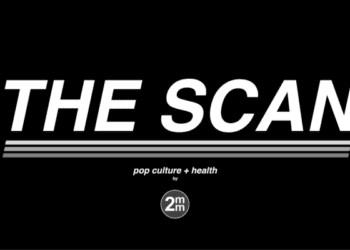40-year trends of net cancer survival reveal improved outcomes
1. The index of net survival for all cancers combined has increased dramatically. For example, for patients diagnosed with cancer during 1971-72, the net survival index was 50% at 1 year after diagnosis. 4 decades later, the same value of 50% was predicted at 10 years after diagnosis.
2. Even after adjustment for the higher mortality from causes other than cancer in elderly people, the net survival for the oldest patients was consistently lower than that of the youngest. This disparity points to the need to keep strengthening efforts to improve outcomes, particularly in the elderly populations.
Evidence Rating Level: 1 (Excellent)
Study Rundown: Along with measures of incidence and mortality, population-based cancer survival lends insight into broad-scale health system effectiveness. This study aimed to assess cancer-survival in a novel manner that would provide a single number to summarize the overall pattern of survival in any one population over a given time period, covering a large range of cancers with highly variable survivals. Survival for each cancer, adjusted for age and sex was also analyzed. Population-based cancer survival data from national cancer registries were analyzed for differing trends in survival at 1, 5, and 10 years after diagnosis during a 40-year span. Overall, index net survival for all cancers combined increased. Net survival for the oldest patients was consistently lower than that of the youngest patients, even when adjusted for increased mortality in elderly patients from causes other than cancer. These findings lend strong clues to specific future research focus analyzing the root causes of these disparities in cancer survival. However, the index will need to be carefully adjusted with time to reflect present population structure as well as avoid site-specific biases of data.
This study was funded by Cancer Research UK.
Click to read the study, published today in The Lancet
Relevant Reading: Trends and socioeconomic inequalities in cancer survival in England and Wales up to 2001
In-Depth [retrospective cohort]: This study aimed to analyze cancer survival trends by constructing a novel survival index that would be independent of changes in age distribution of patients and distributions of lethal cancers in a given population using population-based data from the National Cancer Registry and the Welsh Cancer Intelligence and Surveillance Unit in England and Wales. Data from 7,176,795 adults diagnosed with a first, primary, invasive malignancy during 1971-2011 were analyzed for trends in cancer survival index at 1, 5, and 10 years after diagnosis for the time periods 1971–72, 1980–81, 1990–91, 2000–01, 2005–06, and 2010–11. Trends in age-sex-adjusted survival for each cancer were also estimated.
Overall, index net survival for all cancers combined increased from 1971-2011. The 1 year survival index for all cancers diagnosed during 2010-2011 was 69-70%, compared to 50% in 1971-1972. Trends in age-sex-adjusted survival for each patient were consistent with the average 10% survival advantage for women. Even after adjustment for the higher mortality from other causes than cancer in elderly people, the net survival for the oldest patients (75-99 years) was consistently lower than that of the youngest (15-44 years). Adjusted for age and sex of patients diagnosed between 2010 and 2011, predicted 10-year net survival ranged from 98.2% for testicular cancer to 1.1% for pancreatic cancer.
More from this author: Global surveillance of cancer trends reveals wide variances in survival rate [CONCORD-2 study], START intervention for dementia caregivers linked to reduction of depression symptoms, Mechanical CPR provides no benefit over manual CPR [PARAMEDIC trial], Group B streptococcus infections on the rise despite prevention guidelines, Transplanted stem cells help restore sight in age-related macular degeneration
Image: PD
©2014 2 Minute Medicine, Inc. All rights reserved. No works may be reproduced without expressed written consent from 2 Minute Medicine, Inc. No article should be construed as medical advice and is not intended as such by the authors, editors, staff or by 2 Minute Medicine, Inc.

![2MM: AI Roundup- AI Cancer Test, Smarter Hospitals, Faster Drug Discovery, and Mental Health Tech [May 2nd, 2025]](https://www.2minutemedicine.com/wp-content/uploads/2025/05/Untitled-design-350x250.png)





